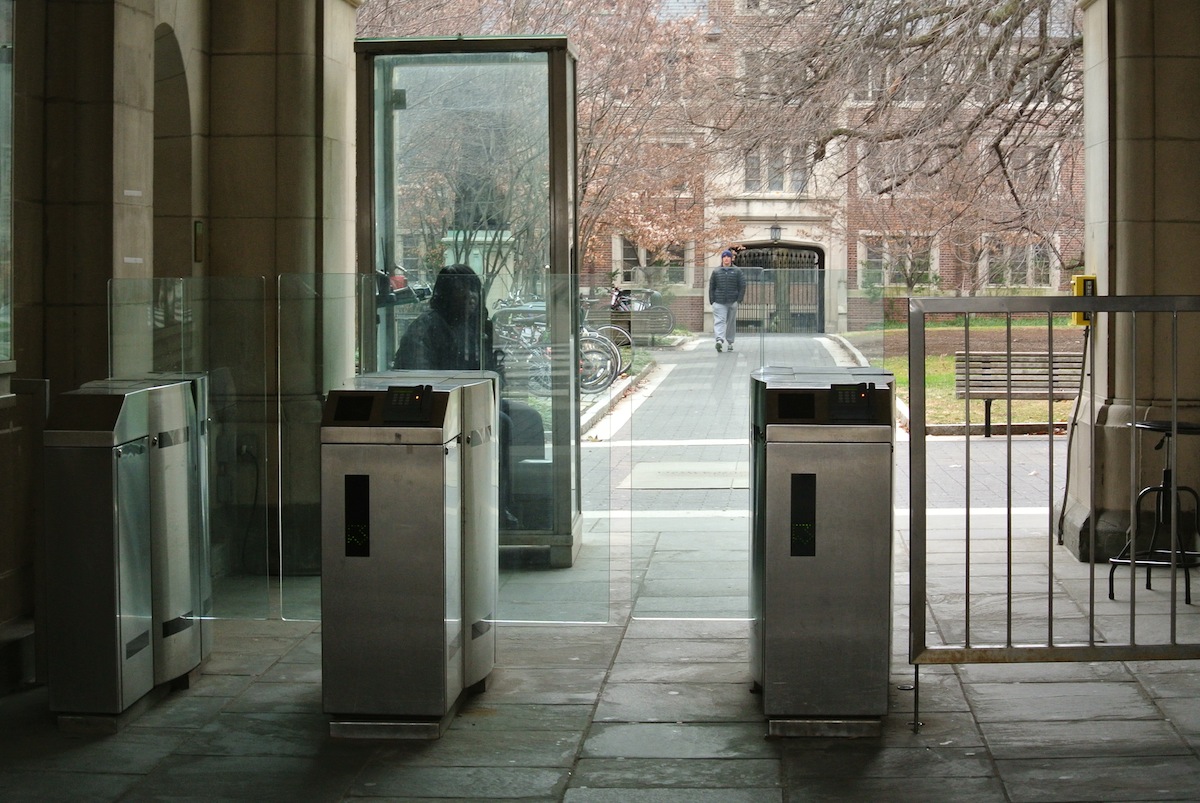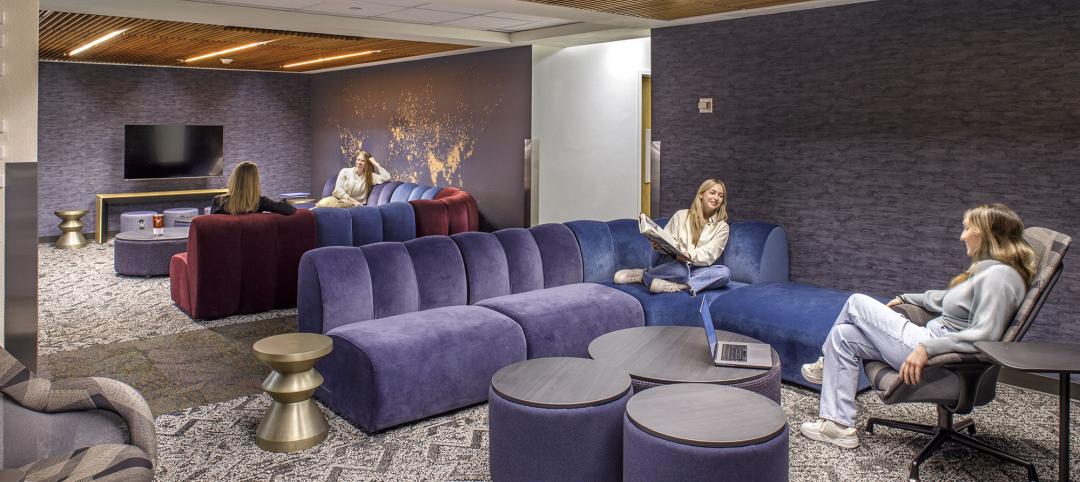In late November, the Alabama Board of Adjustment denied a $1 million lawsuit brought by parents of an Auburn University student who was fatally shot on campus in March 2008. The victim’s father said his main reason for suing the school was to push Auburn to reinstate its campus police department. The university had dissolved its police force in 2004 and contracted with the city’s police department for campus protection.
This case illustrates the potential liability attached to campus public safety programs. Seven years after the mass shootings at Virginia Tech and six years after a similar incident at Northern Illinois University, colleges and universities continue to shake up their emergency communications and response capabilities to shootings and other criminal threats. NIU is now among the many colleges that have systems to transmit alerts to students via email, text, social media, and annunciation systems equipped with sirens.
For more on university security, read BD+C's Special Report: "How security is influencing campus design and construction"
State-mandated alert systems. Many states now mandate that campuses have active, sophisticated alert systems that are immediate and can reach a wide range of people. Within minutes of shots being fired outside Florida State University’s Strozier Library last November, FSU police issued an alert to 40,000 students. It read: “Dangerous Situation! Main Campus—Tallahassee. Seek shelter immediately, away from doors and windows.” Tallahassee police swept in and killed the gunman, who had wounded three people.
Smartphone technology and application software have made transmitting mass alerts simpler. Kristina Anderson, a survivor of the 2007 Virginia Tech shooting spree—a 19-year-old sophomore at the time, she was struck by three bullets—co-developed LiveSafe, a GPS-enabled app that can be used to contact the police via chat, video, and voice. It has been in use at Virginia Commonwealth University, Richmond, since August 2013.
Electronic reader systems with personal PIN codes. These have become fairly common. The ID cards can also be used as debit cards. But what’s becoming a “big deal,” according to security consultant Fred Miehl, Senior Security Consultant, LynStaar Engineering, is a new category called video analytics. This includes cameras that have been programmed to spot unusual movements and send out an immediate alarm, or video imagery that can be linked to images of criminals in police databases. All this technology is in the development phase.
Training and preparedness programs. Many security experts say that training students, faculty, and staff to be alert to potential threats is essential to any public safety program. The University of Pennsylvania conducts more than 200 safety workshops and forums each year for students, faculty, and staff. Since 2012, Bowling Green (Ohio) University has been training its campus community members about their options in an emergency through a program called ALICE—Alert, Lockdown, Inform, Counter, Evacuate.
Mental health intervention. More colleges and universities are bringing mental health and psychology experts into their public safety networks to help identify and assist at-risk students, faculty, and staff before things get out of hand. Shootings, arson, and rape may not be predictable, “but they are preventable,” says Brian Van Brunt, President, National Behavioral Intervention Team Association, and Senior Vice President, National Center for Higher Education Risk Management.
One public policy issue of special concern to academia is the threat to privacy from the proliferation of camera surveillance on campus. In response, the University of Pennsylvania has restricted its surveillance to security and safety matters and may not intrude on private matters. It has established a monitoring panel comprised of students, faculty, and staff to address such questions as where cameras should be placed to protect privacy. Penn staff who monitor camera systems must sign confidentiality agreements and are prohibited from leaking videos of, say, public student intimacy, to social media.
Related Stories
University Buildings | May 10, 2024
UNC Chapel Hill’s new medical education building offers seminar rooms and midsize classrooms—and notably, no lecture halls
The University of North Carolina at Chapel Hill has unveiled a new medical education building, Roper Hall. Designed by The S/L/A/M Collaborative (SLAM) and Flad Architects, the UNC School of Medicine’s new building intends to train new generations of physicians through dynamic and active modes of learning.
Student Housing | May 3, 2024
Student housing construction dips in the first quarter of 2024
Investment in college dorms dipped slightly in the first quarter of 2024, but remains higher than a year ago.
Student Housing | May 1, 2024
Pfluger Architects unveils renovated student lounges at all-girls dormitory
In a step toward updating and modernizing on-campus housing to attract a range of students, Texas-based Pfluger Architects renovated the student lounges in Kinsolving Hall, a five-story, all-girls dormitory at The University of Texas at Austin initially built in 1958.
Mass Timber | Apr 25, 2024
Bjarke Ingels Group designs a mass timber cube structure for the University of Kansas
Bjarke Ingels Group (BIG) and executive architect BNIM have unveiled their design for a new mass timber cube structure called the Makers’ KUbe for the University of Kansas School of Architecture & Design. A six-story, 50,000-sf building for learning and collaboration, the light-filled KUbe will house studio and teaching space, 3D-printing and robotic labs, and a ground-level cafe, all organized around a central core.
Healthcare Facilities | Apr 16, 2024
Mexico’s ‘premier private academic health center’ under design
The design and construction contract for what is envisioned to be “the premier private academic health center in Mexico and Latin America” was recently awarded to The Beck Group. The TecSalud Health Sciences Campus will be located at Tec De Monterrey’s flagship healthcare facility, Zambrano Hellion Hospital, in Monterrey, Mexico.
University Buildings | Apr 10, 2024
Columbia University to begin construction on New York City’s first all-electric academic research building
Columbia University will soon begin construction on New York City’s first all-electric academic research building. Designed by Kohn Pedersen Fox (KPF), the 80,700-sf building for the university’s Vagelos College of Physicians and Surgeons will provide eight floors of biomedical research and lab facilities as well as symposium and community engagement spaces.
Sports and Recreational Facilities | Apr 2, 2024
How university rec centers are evolving to support wellbeing
In a LinkedIn Live, Recreation & Wellbeing’s Sadat Khan and Abby Diehl joined HOK architect Emily Ostertag to discuss the growing trend to design and program rec centers to support mental wellbeing and holistic health.
Student Housing | Feb 21, 2024
Student housing preleasing continues to grow at record pace
Student housing preleasing continues to be robust even as rent growth has decelerated, according to the latest Yardi Matrix National Student Housing Report.
University Buildings | Feb 21, 2024
University design to help meet the demand for health professionals
Virginia Commonwealth University is a Page client, and the Dean of the College of Health Professions took time to talk about a pressing healthcare industry need that schools—and architects—can help address.
Higher Education | Feb 9, 2024
Disability and architecture: ADA and universal design at college campuses
To help people with disabilities feel part of the campus community, higher education institutions and architects must strive to create settings that not only adhere to but also exceed ADA guidelines.

















